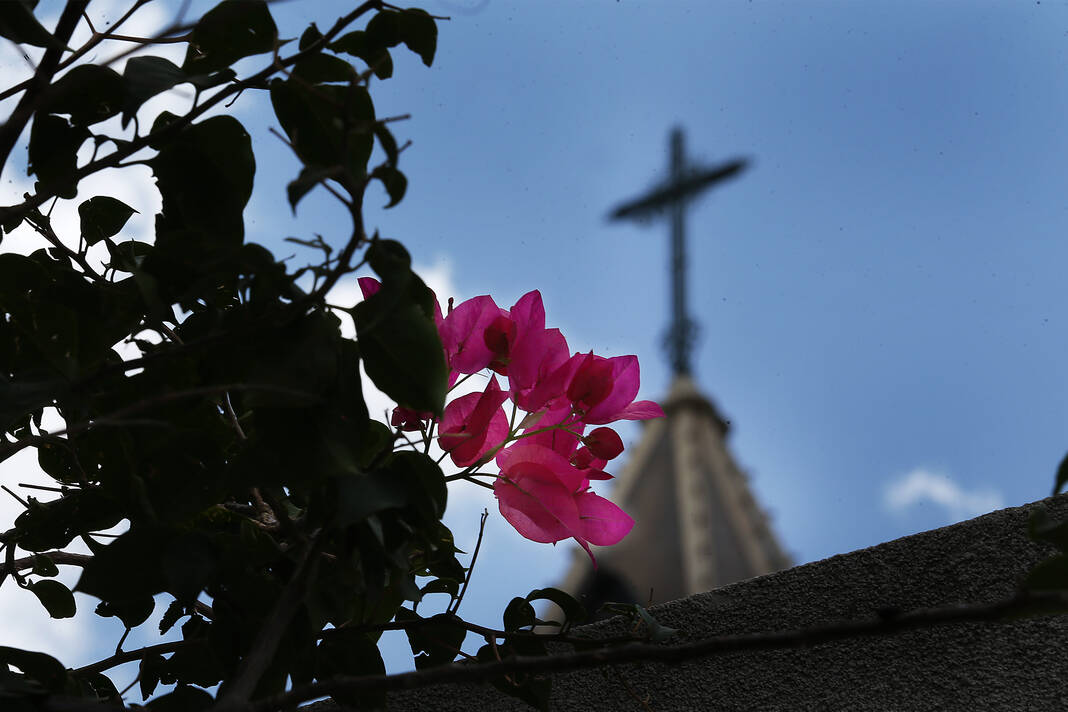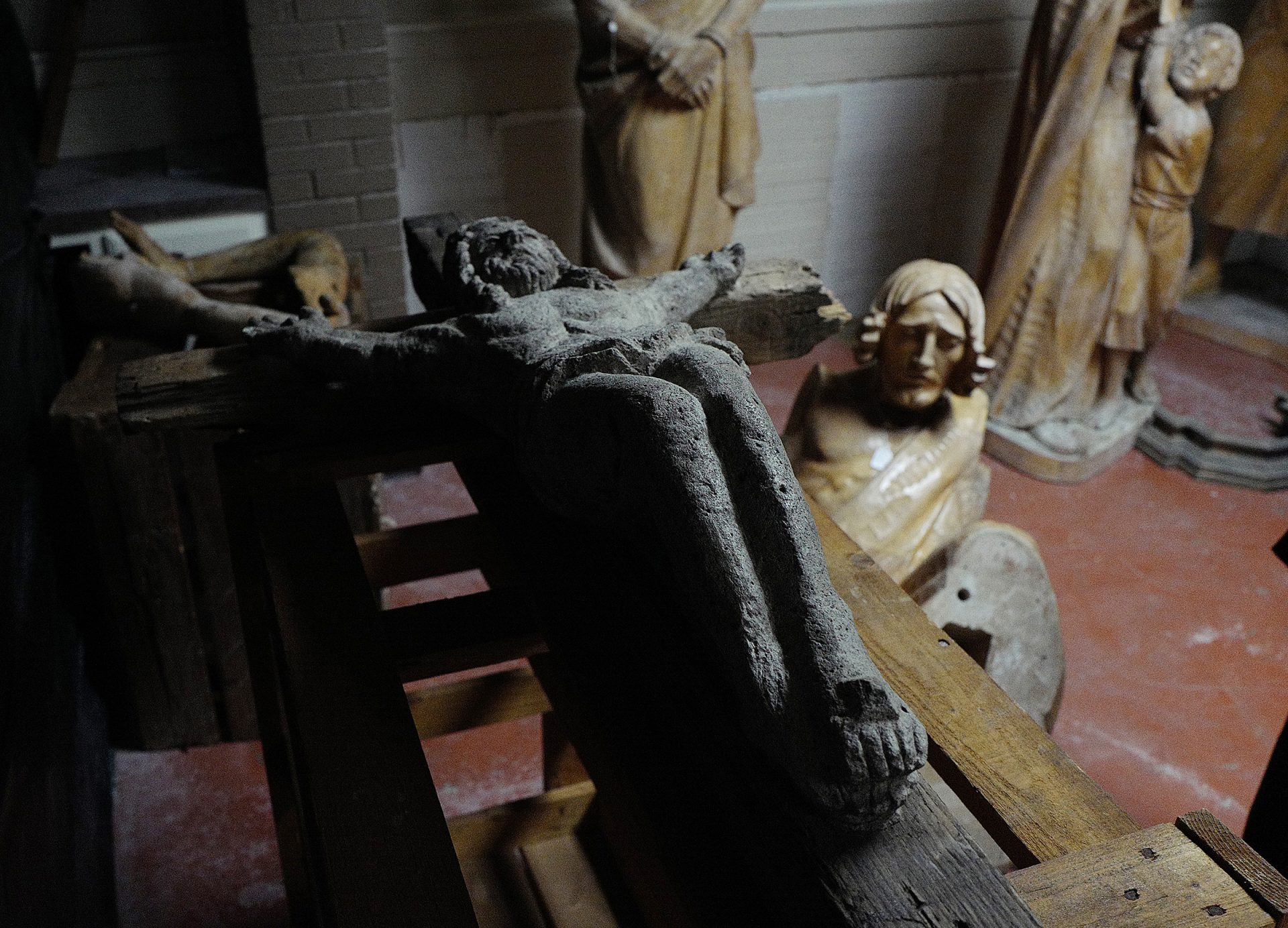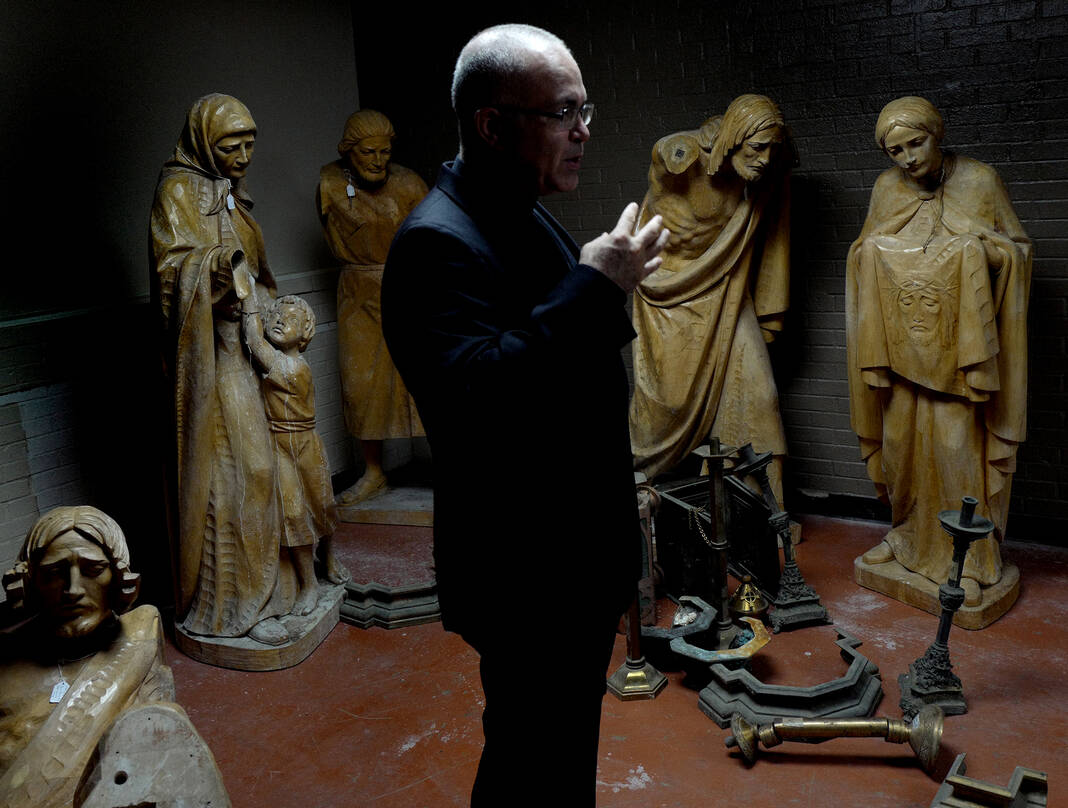|
Only have a minute? Listen instead
Getting your Trinity Audio player ready...
|
SAN JUAN — The history of the Basilica of the National Shrine of Our Lady of San Juan del Valle tells the story of not only San Juan but the Rio Grande Valley.
For Maria Palacios, the shrine has been somewhat of a family business. Both of her parents, Jose Juan and Maria De Jesus Rodriguez, worked for the shrine for over 25 years, and when she and her siblings were old enough, they joined, too.
On Oct. 23, 1970, both of her parents were at their respective jobs at the church — her father in maintenance and her mother at the cafeteria. Her two younger brothers were attending school on site.
At around noon, her brothers and their classmates were eating lunch in the cafeteria on what was otherwise an uneventful day. Then an airplane crashed into the shrine, tearing through the roof of the church and erupting in fire. Chaos ensued.
“The nuns were trying to gather them up like chickens gathering their little chicks to get out to safety,” Palacios recalled her brother telling her.
As the children ran for safety, they had to dodge falling, burning beams as the entire church became fully engulfed.
Palacios and her sister were attending Austin Junior High at the time of the crash. She recalled being allowed to go outside with her fellow classmates to see the billowing smoke from the burning church.
“Of course, my sister and I were so scared because four of our family members were there,” she recalled. “Luckily, everybody was OK.”
The entire church was destroyed in the ensuing fire, save for the bell tower which still stands to this day. In the following days, bulldozers arrived to clean up the rubble from the fiery crash. Many items from the shrine were damaged or destroyed, while some managed to escape unharmed. Regardless, all were mixed into piles of debris as the cleanup efforts persisted.
“My dad told us that they came in with bulldozers, and they didn’t separate anything,” Palacios said. “Everything was going into the bulldozers. So my dad ran and found the cross and he took it home. He didn’t tell us. He just put it in our garage.”
According to Palacios, her father did not tell anyone about the cross in his garage. It was not until after his death that family members discovered the black-charred cross. It remained with Palacios in her house until this year when she decided to return it to the church.

“I called the priest because I needed to know what to do with it,” Palacios said.
“I felt it was time he went back home and continue doing miracles for others, not just me,” she said.
Palacios brought the old, black, charred crucifix to the basilica in January of this year. Father Jorge Gomez, rector of the basilica, immediately recognized the sacred object.
“(Palacios) came and said, ‘I don’t know what to do with this piece of charcoal,’” Gomez recalled with a laugh. “I went to her car to help her. She had it in the trunk of her car. I said, ‘This is not a piece of charcoal. This is the cross from the old church.’”
“I just almost had a heart attack,” Gomez joked.
The cross now resides in a climate-controlled storage room located near the basilica’s administrative office. The room also houses a few other items salvaged from the original shrine, as well as some of the Italian sculpted wooden molds used for the life size bronze statues used for the Stations of the Cross walking path around the basilica.
The returned cross sparked an idea in the rector. He decided to embark on a mission to locate and recover as many of the missing artifacts from the original shrine as possible to be restored and exhibited inside the basilica.
So far he has collected a few items that managed to survive the fiery plane crash, including one of the four original chalices that was found and purchased at a nearby garage sale for $2. Two of the chalices are still missing.
With this new endeavor, Gomez is asking for help from the public in finding and preserving the items so that they may be shared with the community in his planned exhibit, which will include parts of the plane that crashed into the original shrine in 1970.
“What I’ve been hearing over and over is when the plane crashed in the old shrine the bulldozers just came to pile up everything, and then people began taking whatever they could to their homes in the neighborhood,” Gomez said. “And 50-some years later, we’re trying to salvage what they have or to rescue or to recover the items that belonged to the old shrine so that we can have an exposition for the pilgrims to see what they had before and the way … it looks now.”

To accomplish his goal, Gomez is working with the Downtown San Juan Cultural Arts District. Since its founding one year ago, its mission has been to enhance and inspire an appreciation of the arts, history, spirituality and culture of the community. Working with the basilica in not only locating and preserving the missing items, but providing research about the items and their historical ties, was a natural fit.
“From day one when we founded this nonprofit, the emphasis was the basilica as it attracts over 1.5 million visitors annually,” Downtown San Juan Cultural Arts District Founder and Executive Director Miriam Cepeda-Gelman said. “Not everybody knows that, as I’m learning, and with that we’re trying to create more awareness to this small community.”
Eliseo “Eli” Zavala, an intern with the University of Texas Rio Grande Valley, has been working directly with Gomez through the cultural arts district to help uncover the history of the items from the old shrine.
“So my role here has been ‘Where did everything start? How do we get to where we’re at today?’” Zavala explained.
His research has taken him as far back as when the Oblates of the Mary Immaculate first arrived in the Rio Grande Valley and established the first shrine in San Juan.
“That has been my part, to give the story of each item we have here, to give that story to not only San Juan, but to the RGV and, of course, to the 1.5 million people that come here a year to visit, whether they come from Mexico or here within our own nation,” Zavala said.
Gomez hopes to have the exhibit ready and open by this December in the old candle room of the Basilica.
“We’re not trying to go after people. We’re just trying to get the items that are there,” Gomez said. “They can call the office here at the Basilica or just bring them to the front desk, and we’ll try to do some work on them to repair them so people can see what was before.”




